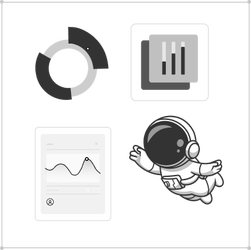Top 10 AI Tools Every Teacher Should Know in 2025
- Mustapha Alouani
- Resources
- January 20, 2025
Table of Contents
As we advance through 2025, artificial intelligence has become an indispensable ally for educators worldwide. The landscape of AI tools for teachers has evolved dramatically, offering sophisticated yet user-friendly solutions that enhance teaching effectiveness and student engagement.
Why AI Tools Matter for Teachers
Before diving into specific tools, it’s important to understand why AI has become so crucial in education:
- Time savings: Automate repetitive tasks like grading and content creation
- Personalization: Adapt content to individual student needs
- Enhanced creativity: Generate fresh ideas and diverse teaching materials
- Data insights: Better understand student progress and learning patterns
- Accessibility: Make education more inclusive for all learners
The Top 10 AI Tools for Teachers in 2025
1. ChatGPT for Education
What it does: Advanced conversational AI for content creation and lesson planning
Key features:
- Lesson plan generation
- Quiz and assessment creation
- Explanation simplification
- Creative writing prompts
Practical example: Generate differentiated reading comprehension questions for the same text at three different difficulty levels.
Pricing: Free tier available, Plus subscription $20/month

2. Grammarly for Educators
What it does: AI-powered writing assistant for both teachers and students
Key features:
- Real-time grammar and style checking
- Plagiarism detection
- Tone adjustment suggestions
- Writing analytics
Practical example: Help students improve their essay writing with instant feedback on clarity, engagement, and correctness.
Pricing: Free version available, Premium $12/month
3. Canva Magic Design
What it does: AI-powered design tool for creating educational materials
Key features:
- Instant presentation creation
- Educational poster generation
- Infographic templates
- Brand kit consistency
Practical example: Create visually appealing science posters in minutes by simply describing your topic.
Pricing: Free tier available, Pro $15/month
4. Kahoot! AI
What it does: AI-enhanced interactive learning platform
Key features:
- Auto-generated quizzes from content
- Adaptive questioning
- Real-time engagement analytics
- Collaborative learning features
Practical example: Upload a PDF of your lesson and automatically generate an engaging quiz for review.
Pricing: Free basic version, Premium plans from $7/month
5. Notion AI
What it does: AI-powered workspace for lesson planning and organization
Key features:
- Automated content generation
- Smart templates
- Database organization
- Collaborative planning
Practical example: Create comprehensive unit plans with automatically generated learning objectives and assessment rubrics.
Pricing: Free personal use, Plus $8/month
6. Speechify
What it does: AI text-to-speech for accessibility and content consumption
Key features:
- Natural-sounding voice synthesis
- Speed adjustment
- Multiple language support
- Document scanning and reading
Practical example: Convert written materials into audio format for students with reading difficulties or visual impairments.
Pricing: Free tier available, Premium $11.58/month
7. Gradescope
What it does: AI-assisted grading and assessment platform
Key features:
- Automated rubric application
- Handwriting recognition
- Bulk feedback generation
- Analytics and insights
Practical example: Grade 100 math homework assignments in 15 minutes with consistent rubric application.
Pricing: Free for small classes, institutional pricing available
8. Quillbot
What it does: AI writing and research assistant
Key features:
- Paraphrasing and rewriting
- Grammar checking
- Citation generation
- Summarization
Practical example: Help students rephrase complex academic texts to improve understanding while maintaining original meaning.
Pricing: Free version available, Premium $9.95/month
9. Socratic by Google
What it does: AI-powered homework help and learning assistant
Key features:
- Photo-based problem solving
- Step-by-step explanations
- Subject-specific support
- Visual learning aids
Practical example: Students can photograph math problems and receive detailed solution steps with explanations.
Pricing: Completely free
10. Otter.ai
What it does: AI transcription and meeting assistant
Key features:
- Real-time transcription
- Speaker identification
- Searchable transcripts
- Integration with video platforms
Practical example: Automatically transcribe lectures for students who need written notes or missed class.
Pricing: Free tier available, Pro $10/month
Implementation Strategies
Start Small and Scale
- Choose one tool to begin with
- Master its basic features before exploring advanced options
- Gather student feedback on effectiveness
- Gradually introduce additional tools
Professional Development
- Join AI in education communities online
- Attend workshops and webinars
- Collaborate with tech-savvy colleagues
- Experiment during low-stakes periods
Ethical Considerations
Student Privacy
- Always review data collection policies
- Obtain necessary permissions for student use
- Teach students about digital citizenship
Academic Integrity
- Establish clear guidelines for AI tool usage
- Discuss appropriate vs. inappropriate applications
- Model ethical AI use in your own practice
Measuring Success
Key Metrics to Track
- Time saved on routine tasks
- Student engagement levels
- Learning outcome improvements
- Feedback quality and frequency
Student Feedback
Regular surveys can help you understand:
- Which tools students find most helpful
- Areas where AI support is most needed
- Potential barriers to adoption
Looking Ahead: Emerging Trends
Multimodal AI
Tools that can process text, images, audio, and video simultaneously are becoming more common, offering richer educational experiences.
Emotional AI
Future tools will better understand and respond to student emotions, providing more empathetic and supportive learning environments.
Collaborative AI
AI systems that can work together and with humans in more sophisticated ways will enable new forms of collaborative learning.
Conclusion
The AI tools available to teachers in 2025 represent a significant leap forward in educational technology. By thoughtfully integrating these tools into your teaching practice, you can:
- Save valuable time for more meaningful student interactions
- Enhance learning experiences through personalization
- Improve accessibility for all students
- Stay current with educational innovation
Remember, the goal isn’t to replace human teaching but to augment and enhance your natural abilities as an educator. Start with one or two tools that address your most pressing needs, and gradually expand your AI toolkit as you become more comfortable with these technologies.
For more insights on AI in education, check out our comprehensive book or explore additional resources on our website.
Tags: #AITools #Teaching #Education #Technology #Innovation